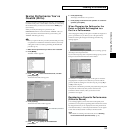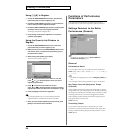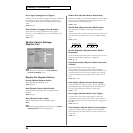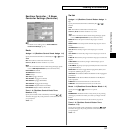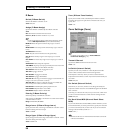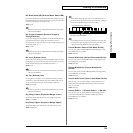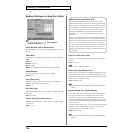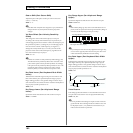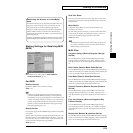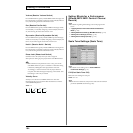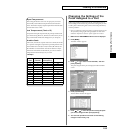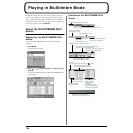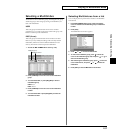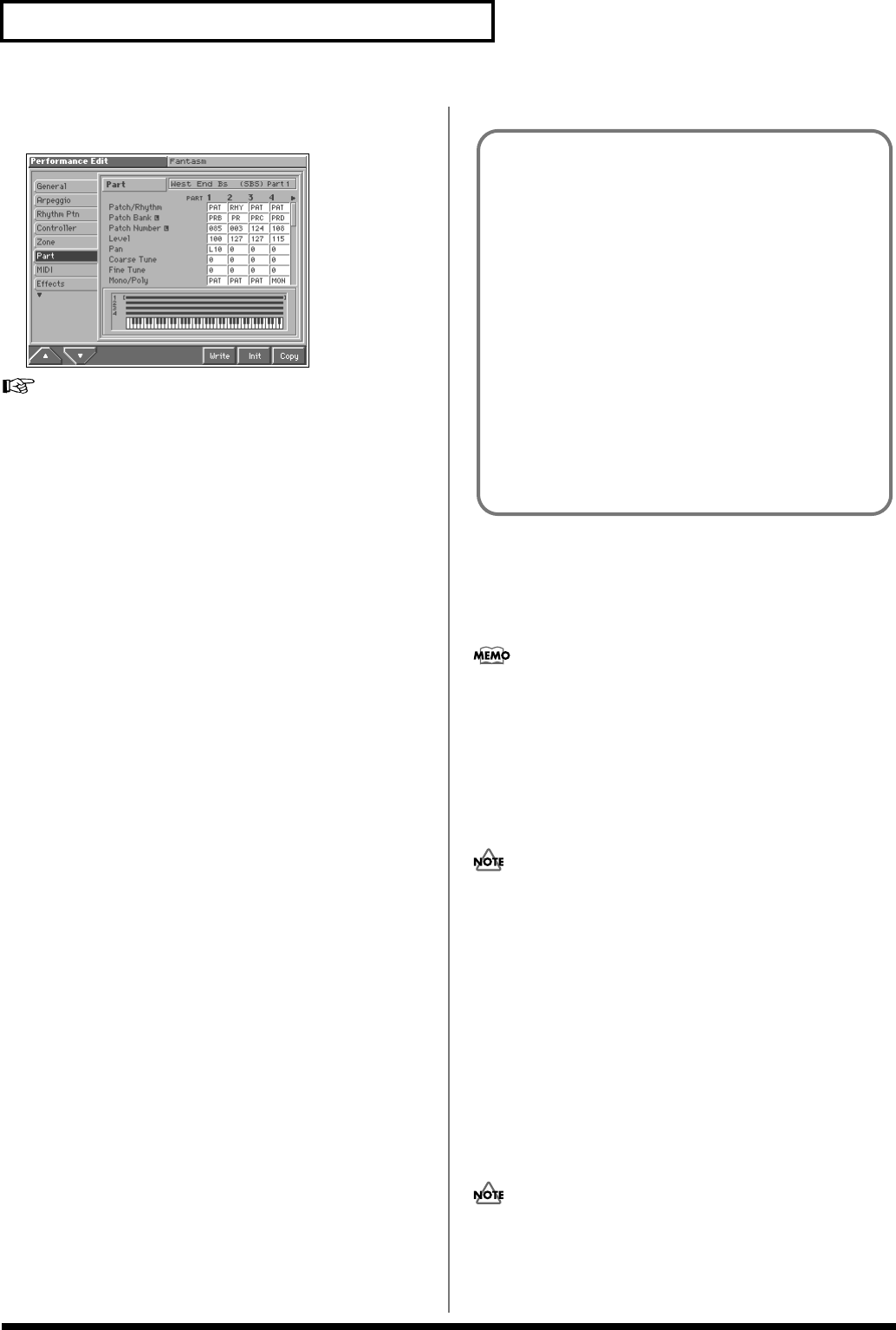
100
Creating a Performance
Making Settings for Each Part (Part)
fig.06-13_50
For details on the setting, refer to “How to Make the
Performance Settings” (p. 91).
Patch/Rhythm (Patch/Rhythm Set)
Sets the assignment of a patch (PAT) or rhythm set (RHY) to each of
the parts.
Patch Bank
Selects the group to which the desired patch or rhythm set belongs.
Value
USR: User
PRA–E: Preset A–E
GM: GM (GM2)
XPA–C: Wave Expansion Boards installed in EXP-A–C Slots
Patch Number
Selects the desired patch or rhythm set by its number.
Value: 001–***
Level (Part Level)
Adjust the volume of each part. This setting’s main purpose is to
adjust the volume balance between parts.
Value: 0–127
Pan (Part Pan)
Adjust the pan of each part. “L64” is far left, “0” is center, and “63R”
is far right.
Value: L64–0–63R
Coarse Tune (Part Coarse Tune)
Adjusts the pitch of the part’s sound up or down in semitone steps
(+/-4 octaves).
Value: -48– +48
Fine Tune (Part Fine Tune)
Adjusts the pitch of the part’s sound up or down in 1-cent steps (+/-
50 cents).
Value: -50– +50
One cent is 1/100th of a semitone.
Mono/Poly (Part Mono/Poly)
Set this parameter to “MON” when the patch assigned to the part is
to be played monophonically, or to “POL” when the patch is to be
played polyphonically. When using the setting of the patch assigned
to each part (p. 47), set this to “PAT.”
Value: MON, POL, PAT
For the part to which the rhythm set is assigned, this setting is
ignored.
Legato Switch (Part Legato Switch)
You can add legato when performing monophonically. Legato is a
playing style in which the spaces between notes are smoothed,
creating a flowing feel with no borders between the notes. This
creates a smooth transition between notes, which is effective when
you wish to simulate the hammering-on and pulling-off techniques
used by a guitarist.
Turn this parameter “ON” when you want to use the Legato feature
and “OFF” when you don’t. When using the setting of the patch
assigned to each part (p. 48), set this to “PAT.”
Value: OFF, ON, PAT
For the part to which the rhythm set is assigned, this setting is
ignored.
Coarse Tune and Octave Shift
The Coarse Tune and Fine Tune parameters, along with the
Octave Shift parameter, can all be seen as doing the same thing
to the sound, i.e., changing the pitch of the sound. For example,
if C4 (Middle C) is played with the Coarse Tune parameter set
to “+12,” the note produced is C5 (one octave above C4). For
example, if C4 (Middle C) is played with the Octave Shift
parameter set to “+1,” the note produced is C5 (one octave
above C4).
However, internally these function very differently. When the
Coarse Tune parameter is set to “+12,” the pitch itself is raised
one octave. On the other hand, when the Octave Shift parameter
is set to “+1,” it is the same as pressing the keys one octave up.
In other words, use the Coarse Tune parameter when changing
the pitch, and the Octave Shift parameter when you want to
shift the entire keyboard, for example, when the number of keys
is insufficient.




